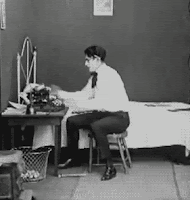
What NOT to say to a depressed person
I've posted this several times before, but each time it seems more relevant. I believe, at one point or another, I have heard all of these. When a major figure (particularly a celebrity) commits suicide, we dust off a lot of homilies, and repeat "reach out for help" with the same regularity as that other meaningless phrase, "thoughts and prayers". It's sad that the onus for "reaching out" is always placed on the suffering person, as if it's an easy thing to do or as if they wouldn't have done it already if they could - and if the help were there.
All too often, the "help" is inadequate (I was recently told by a psychiatrist that the average person with mental illness is misdiagnosed FIVE TIMES), or not there at all. Witness agonized parents sitting in the ER for three hours while their suicidal daughter, barely hanging on to life, waits for some sort of medical attention, likely dismissive (for psychiatric cases are still viewed as "mental" and somehow within the patient's control). No one realizes that if they don't have any beds in the psych ward, which they almost never do, the patient will almost certainly be sent home with a prescription and a promise never to do it again. Even if she is admitted, no one will send flowers or cards or come to visit her in the psych ward, because that very name inspires dread. (Funny thing, because people visit prisons all the time.) Having your tonsils out would inspire a very different response.
"Reach out for help" seems to be the panacea right now, and unless they have been there, people don't look beyond it. Are things changing? Perhaps, but not quickly or profoundly enough to penetrate the blank wall of gratuitous advice which is the conventional and acceptable response.

“It’s all in your mind.”
“You just need to give yourself a good swift kick in the rear.”
“No one ever said life was fair.”
“I think you enjoy wallowing in it."
"Depression is a choice, you know."
“Pull yourself up by your bootstraps.”
“Stop feeling sorry for yourself.”

"There are a lot of people worse off than you.”
“But it’s a beautiful day!”
“You have so many things to be thankful for!”
“You just want attention.”
“Happiness is a choice, you know.”
"Just read this book. It'll fix you right up."
“Everything happens for a reason.”

“There is always somebody worse off than you are.”
“You should get off all those pills.”
“You are what you think you are.”
“Cheer up!”
“Have you been praying/reading your Bible?”
"People who meditate don't get depressed."
“You need to get out more.”

"Don't you have a sense of humour?"
“Most folks are about as happy as they make up their minds to be.”
“Get a job!”
“Smile and the world smiles with you, cry and you cry alone.”
"Just read this book. It'll fix you right up."
“But you don’t look depressed. You seem fine to me.”
“You can do anything you want if you just set your mind to it.”

“Snap out of it, will you? You have no reason to feel this way.”
“I wish I had the luxury of being depressed.”
“That which does not kill us makes us stronger.”
"Just read this book. It'll fix you right up."
"Do you want your family to suffer along with you?"
“Can't you at least make an effort?"

“Believe me, I know exactly how you feel. I was depressed once for several
days.”
“Turn it over to your Higher Power.”
“I think your depression is a way of punishing us.”
“So, you’re depressed. Aren’t you always?”
“You’re always so negative! Look on the bright side.”

“What you need is some real tragedy in your life to give you perspective.”
"You're a writer, aren't you? Just think of all the good material you're
getting out of this."
“Have you tried camomile tea?”
"I TOLD you to read that book."
"Go out and help someone who is worse off than you and you won't
have time to brood."
“You have to take up your bed and carry on.”
“Well, we all have our crosses to bear.”
"God never gives us more than we can handle."
"I was depressed until I tried yoga."
“You don’t like feeling that way? Change it!"
“SMILE!”





















































